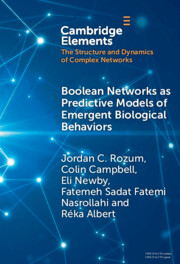Element contents
Boolean Networks as Predictive Models of Emergent Biological Behaviors
Published online by Cambridge University Press: 04 March 2024
Summary
Keywords
- Type
- Element
- Information
- Online ISBN: 9781009292955Publisher: Cambridge University PressPrint publication: 28 March 2024
References
- 2
- Cited by

